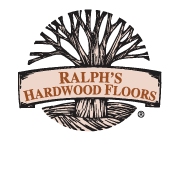After World War I, the 1920’s was a time of economic prosperity (you’ve undoubtedly heard the term “The Roaring ‘20s”). Culture, lifestyles, fashion, and music were all experiencing significant changes.
It was also an important transition period for architecture and housing. Many standards and changes in residential home building improved as people could then afford things that were once found only in the houses of wealthy people. In the 1920’s, with the introduction of the electric portable wood sander, the popularity of hardwood flooring took off.
Neutral and Grey Color Palettes
In recent years, neutral and grey wood flooring palettes have taken center stage. This muted color scheme was exclusive only to industrial and urban settings, but not anymore. Today, it has become synonymous with the words “stylish, smart, and chic.” Whether dark or light, neutrals and grey colors are quite versatile and can help you bring continuity to your interior color scheme. Neutral and grey hardwood floors create a solid foundation for more prominent pieces.
Wide Boards and Brown Colors
Besides the grey/neutral trends, there are also many cases of natural-looking flooring that mix brown with grey shades. As for wide (and long boards), they were used in the 1920’s when people could only manufacture long and wide planks due to conventional milling methods.
Directional and Multi-Toned Barn Wood Look
For people looking for a warm and rustic look, the barn-wood look is an option to consider. This wood flooring mimics the exact look of the raw-wood look from the 1920s. Manufacturers of prefinished and engineered flooring add a directional finish for additional “wood” authenticity.
Decorative Flourishes
In the 18th century, decoratively painted interiors became quite popular, and this method was also applied to hardwood floors throughout the 19th and 20th centuries. They became monochromatic or beautifully ornamented with various geometric shapes.
Recently, designer hardwood floors came back into play, and decorative flooring options are virtually unlimited due to modern staining techniques. We all know the usual side-by-side format of hardwood pieces laid on a floor. But people who want to add a unique twist to their flooring are doing so with patterned wood layouts.
In life, things appear to go in cycles, which is certainly true when it comes to interior-design styles. Many homeowners today—soon to enter into the 2020’s—love the raw, authentic, and neutrally rustic feeling that recalls the hardwood floors of a hundred years ago. .
We understand that the style of your hardwood flooring defines the base for the rest of your interior design. We offer a wide range of flooring options, so visit our showroom, and see what we have to offer!















